Conferenciantes Plenarios
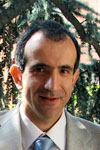
Prof. Luca Prodi
Universidad de Bolonia
Dye Doped Silica Nanoparticles as Luminescent Organized Systems for Nanomedicine
Merging nanoparticles and luminescent signalling can lead to the creation of unique tools for the design of inexpensive, hand-held diagnostic and theranostic kits. In this wide scenario dye doped silica nanoparticles constitute very effective nanoplatfoms to obtain efficient luminescent, stable, biocompatible and targeted agents for biomedical applications.
Luca Prodi was born in Bologna in 1965 where he received his PhD in Chemical Sciences in 1992. Appointed researcher in 1992 and associated professor in 2004, in 2006 he was promoted to full professor of General and Inorganic Chemistry at the University of Bologna. He was visiting scientist at Argonne National Laboratory (IL, USA) and at the École Normale Superieure de Cachan (France). His research activity is focused on the design of luminescent labels and sensors, with a particular emphasis on those based on gold and silica nanoparticles.
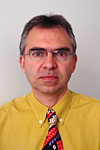
Prof. Demetrios Anglos
Institute of Electronic Structure and Laser-FORTH (Grecia)
Art and Archaeology through the Specctroscopic Looking Glass
Demetrios Anglos is Associate Professor at the Department of Chemistry, University of Crete (Sept. 2009) and Associated Researcher at IESL-FORTH, where he leads the Applied Spectroscopy Laboratory (since 2001). He holds a B.Sc. in Chemistry (1986) from the University of Athens, Greece and a Ph.D. in Physical Chemistry (1994) from Cornell University, USA. His research activities concentrate on the photophysics of molecules and nanoparticles and on the applications of laser spectroscopic techniques in the analysis of materials in works of art and archaeological objects with emphasis on the development of novel methodology and instrumentation. The output of his research is presented in over 80 publications in peer-reviewed journals and in several talks (15 invited) at major international conferences. He has been involved in several EU and national funded research projects. He has also co-ordinated a multi-site Marie-Curie Early Stage Training project (Advanced Training in Laser Sciences; 2004-2008). Since 2001 he's been serving as the technical manager of the Ultraviolet Laser Facility operating at IESL-FORTH, which is currently a member of LASERLAB-EUROPE a network linking 26 major European laser infrastructures. He is teaching Physical Chemistry (Molecular Spectroscopy) and an advanced laboratory course on modern laser-based research in Chemistry and Materials Science. He has supervised several undergraduate and graduate research thesis projects (10 diploma, 6 MSc, 3 PhD). As of fall 2012 he is a member of the Editorial Board of Heritage Science, a new open access journal published by Chemistry Central.
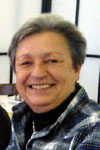
Profa. Concepción Domingo
Instituto de Estructura de la Materia, CSIC, Madrid
Espectroscopía Raman, una herramienta 'de amplio espectro': de las cuevas rupestres a Marte pasando por el diagnóstico médico, la cosmética y la nanotecnología
Es Profesora de Investigación del CSIC, a cuya plantilla investigadora se incorporó en 1980. Licenciada (1971) y Doctora (1975) en Ciencias Químicas por la Universidad Complutense de Madrid e investigadora postdoctoral en Alemania, ha realizado estancias en Universidades y Centros de Investigación de Francia, Italia, Chile, USA y Rusia. Es co-autora de más de 140 Publicaciones y capítulos de libros, tiene más de 180 contribuciones a Congresos Internacionales y 90 a Congresos Nacionales. Ha pronunciado Conferencias Invitadas en diversos eventos, ha dirigido Tesis doctorales y ha sido Profesora envarios Cursos de Especialización. Ha sidoresponsable de la organización de varios Congresos Internacionales y Nacionales, así como de Cursos de Especialización y Postgrado, en el campo de la Espectroscopía Molecular.
Ha ejercido tareas de gestión en el CSIC (Vicedirectora del Instituto de Estructura de la Materia (1986-1990);Miembro del Grupo Asesor de Ciencia y Tecnología Europea (1998-2001);Coordinadora Adjunta del Área de Ciencia y Tecnologías Físicas (2008-2010)) y en Sociedades Científicas (Vicepresidenta (2002-2005) y Presidenta (2005-2008) de la Sociedad Española de Óptica (SEDOPTICA); Miembro del “Comité Asesor” y del “Consejo de Directores” de la European Optical Society, EOS (2005-2010)) y ha sido Representante española en varias Acciones COST de la UE (2006-2013).
En 2011 fue nombrada Fellow de EOS y en 2013 Socio de Honor de SEDOPTICA.
Sus trabajos de investigación se enmarcan en el campo de la Física Molecular, en particular, en el desarrollo y utilización de técnicas - tanto convencionales como nolineales - de espectroscopía vibracional infrarroja y Raman, así como espectroscopía ultrasensible de absorción intracavidad láser, espectroscopía infrarroja (láser) cinética y aplicación a la caracterización y diagnóstico de plasmas fríos. Durante los últimos 15 años se ha dedicado de forma especial a la espectroscopía vibracional intensificada por superficies metálicas (Surface-EnhancedRamanScattering - SERS- y Surface-Enhanced Infrared Absorption-SEIRA-) como técnicas de alta sensibilidad a utilizar como sensores moleculares. Paralelamente ha aplicado técnicas de microscopía e imagen Raman a la caracterización de materiales de interés tecnológico, como los nanotubos de carbono y materiales compuestos, y ha contribuido notablemente a extender las aplicaciones de la espectroscopía vibracional a la conservación del Patrimonio Cultural.
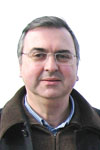
Mário Berberan-Santos
Instituto Superior Técnico (IST), University of Lisbon
Thermally Activated Delayed Fluorescence. Fundamentals and Applications in Optical Sensing and in OLED Materials.
Thermally Activated Delayed Fluorescence (TADF) following optical excitation has been studied by us both theoretically and in relation with fullerenes. Recently, TADF became relevant in temperature and oxygen optical sensing and in the Organic Light-Emitting Diode (OLED) field, leading to outstanding results (3rd generation OLED materials. In the last case both the singlet and the triplet are directly excited. We will contrast the kinetics for optical excitation and for electron-hole recombination, and will also refer the nature and significance of the unique 13C isotope effect observed in the TADF of fullerenes.
Mário Berberan-Santos is Full Professor of Physical Chemistry, Materials and Nanosciences at Instituto Superior Técnico (IST), University of Lisbon. Mário Berberan-Santos graduated in Chemical Engineering from IST in 1984. After a brief stay at the National Research Council of Canada (Ottawa) with A. Szabo, he received his Ph. D. in Chemistry from IST (M. Prieto) in 1989. He was a post-doctoral Fellow with Bernard Valeur at Conservatoire National des Arts et Métiers (Paris, France), and at Laboratoire pour l'Utilisation du Rayonnement Electromagnétique (LURE, Univ. Paris-Sud, Orsay, France) in 1990-91. He was several times Invited Full Professor at the École Normale Supérieure de Cachan (France). He is member of the Permanent Steering Committee of the MAF Conferences, Fellow of the Royal Society of Chemistry, and member of the International Academy of Mathematical Chemistry. He is member of the Editorial Advisory Boards of ChemPhysChem - A European Journal of Physical Chemistry and Chemical Physics (Wiley-VCH and ChemPubSoc Europe), Methods and Applications in Fluorescence (IOP-UK) and MATCH – Communications in Mathematical and in Computer Chemistry. He was President of the Portuguese Chemical Society (2010-2013), and is President of Centro de Química-Física Molecular (2012-2016).
Mario Berberan-Santos has carried out theoretical and experimental work on the structure of nano and supramolecular systems, and on molecular photophysics, including radiative and nonradiative (FRET) electronic energy transfer and transport. He published ca. 160 articles, 16 book chapters and 3 books. Current interests include the luminescence of fullerenes and related nanostructured systems, as well as luminescence relaxation and other kinetic processes, including applications such as sensing and lighting. He is currently responsible for the participation of IST in the EU FP7 project SAFUEL.
Conferenciantes Invitados
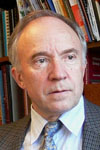
Fernando Rull
Universidad de Valladolid
Aplicaciones de la espectroscopia Raman a la exploración planetaria y sus posibles análogos terrestres
Fernando Rull Perez is Professor in Crystallography and Mineralogy at the University of Valladolid since 1989 and the Head of the Unidad Asociada UVA-CSIC al Centro de Astrobologia in Madrid since 2002. Vice-Dean at the Faculty of Sciences, University of Valladolid 1986-87. Director of the "Instituto Universitario de Investigación del Deporte" 1993-1997. Director del Centro de Estudios de Asia de la Universidad de Valladolid, 2003-2006. Member of IUPAC, Commission on Solubility Data (V.8). President of the International GEORAMAN Congress and Catalogue Coordinating Committee (1999-2002 and 2006-2008). Vice-president 2009-2011. Vice-president of the Spanish Mineralogical Society 1997-2008. Associate Editor (Spanish representative) of the European Journal of Mineralogy (EJM) 2009. Senior Scientist (TUTOR) at the Centro de Astrobiología INTA-CSIC, associeted to NASA Astrobiology Institute since 2000. Director of the Unidad Asociada UVA-CSIC at the Centro de Astrobiologia. Principal Investigator (PI) of the Raman instrument for Exomars mission (ESA) since 2004. He studied Physics at Valladolid University obtaining the Ph.D. in 1976 with the University of Valladolid Special Award. His formation as postdoctoral fellow extended at Montpellier, Bradford and Copenhagen Universities. He returned to Valladolid as Assistant Professor in 1980 becoming Professor in Chair of Crystallography and Mineralogy in 1989. His research interest has been related with the application of spectroscopic techniques (IR, Raman) XRD and other related techniques to the structural characterisation of materials (polymers, crystals of technical interest). The research also covers several applications of Raman and IR spectroscopy to minerals, meteorites, art and archaeology. From his incorporation to the Centre of Astrobilogy in 2000 Fernando Rull has participated in projects related with Mars exploration (Beagle II, UV-sensors calibration), EXLIBRIS project for Pasteur payload and MARTE program in collaboration with NASA, participating in the development and in the science team of the bore-hole Raman spectrometer. He is developing from 2005 as Principal Investigator the Raman spectrometer for Mars exploration within ESA’s ExoMars mission. Research interest is mainly devoted to the instruments development in Raman spectroscopy both in contact and remote modes. The interest extends also to combining Raman with other techniques as for example LIBS or fluorescence in a single instrument. In the last years scientific interest is focussed in astromineralogical and astrobiological aspects related with planetary exploration and study of meteorites, impact materials and potential Martian analogues of Mars as Rio Tinto, Jaroso Ravine, Arctic (AMASE), Barberton, Iceland, Australia, Mauritania, etc. He published about 130 peer-review papers in different journals and about 200 communications in conferences.
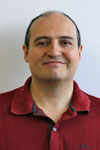
Martín Resano
Universidad de Zaragoza
Non-invasive methods for clinical elemental analysis. Direct analysis of dried matrix spots for diagnosis and control
Martín Resano obtained his Ph.D. from the University of Zaragoza in 1999. After a post-doctoral period at Ghent University, Belgium, he became Profesor Titular de Universidadin the department of Analytical Chemistry at the University of Zaragoza in 2003. He currently leads the research group ‘‘M.A.R.T.E.’ (www.unizar.es/marte’) and focuses his research on the development of direct methods for elemental and isotopic analysis, mostly using electrothermal vaporization-ICP-MS, LA-ICP-MS and high-resolution continuum source graphite furnace atomic absorption spectrometry, topics to which he has contributed with more than 80 publications. He is a member of Sociedad Española de Química Analítica, a Fellow of the Royal Society of Chemistry and member of the Editorial Board of the Journal of Analytical Atomic Spectrometry.

Manuel Montejo Gámez
Universidad de Jaén
Quiralidad molecular y supramolecular mediante cálculos químico-cuánticos y dicroísmo circular vibracional
La quiralidad (molecular y/o supramolecular) es un fenómeno ubicuo en los sistemas vivos que controla el desarrollo de multitud de procesos biológicos, por lo que la caracterización estructural de especies quirales tiene un gran interés. Se expondrán algunos ejemplos de los logros alcanzados por nuestro grupo de investigación en este tipo de estudios, para los cuales se ha hecho un uso conjunto de técnicas espectroscopicas vibracionales sensibles (VCD) y no sensibles (IR, Raman) a la quiralidad y cálculos químico-cuánticos.
Molecular and supramolecular chirality by quantum chemical calculations and vibrational circular dichroism
Chirality (both molecular and supramolecular) is ubiquitous in living systems and controls the development of many biological processes, so that the structural characterization of chiral species is of great interest. My presentation will deal with some examples of the achievements of our research group in this field, accomplished by the combined use of vibrational spectroscopy techniques (VCD, IR and Raman) and quantum-chemical calculations.
Manuel Montejo es Profesor Contratado Doctor en el Departamento de Química Física y Analítica de la Universidad de Jaén. Hasta la fecha, su trayectoria investigadora ha estado centrada en el estudio de la estructura molecular y reactividad de compuestos organosilícios y organogermánicos de interés industrial y biológico. Paralelamente ha participado en estudios de caracterización estructural de materiales arqueológicos de procedencia íbera mediante microespectrometría Raman (MRS), siendo miembro del Instituto Universitario de Investigación en Arqueología Ibérica. En ambas líneas de trabajo es autor de más de 30 artículos científicos y he participado en diversos proyectos de investigación, financiados a nivel estatal y autonómico. En la actualidad, está empezando su andadura en una nueva línea de trabajo, centrada en el estudio de sistemas (moleculares y supramoleculares) quirales, empleando cálculos químico cuánticos y dicroísmo circular vibracional (VCD).
Manuel Montejo is Profesor Contratado Doctor in the Department of Physical and Analytical Chemistry, University of Jaén. So far his research has been focused on the study of the structure and reactivity of organosilicon and organogemanium compounds of industrial and biological interest. Further, he has participated in characterization studies of Iberian archaeological remains using Raman microscopy (MRS), being member of the University Institute for Research in Iberian archeology. In both fields he has co-authored over 30 scientific articles and has participated in several research projects funded at national and regional level. Nowadays, he is starting his journey into a new line of work, focusing on the study of chiral systems using quantum chemical calculations and vibrational circular dichroism (VCD).
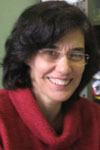
Helena Vieira Alberto
Universidad de Coimbra
Spectroscopy of a muonium atom formed inside a semiconductor
Muonium is a bound state of a positive muon and an electron. When positive muons are implanted in a semiconductor, a fraction of them for muonium. The muonium atom acts as a light isotope of hydrogen and its spectroscopic study contributes to the understanding of the effect of isolated hydrogen in semiconductors. Some examples of muonium formation in semiconductors will be presented as well as the relevant spectroscopic information that may be obtained.
Helena Vieira Alberto did her graduation and PhD in Physics in the University of Coimbra, Portugal. The PhD thesis, completed in 1995, was devoted to the study of amorphous materials by Raman and Mössbauer spectroscopy. Since then, she is an Auxiliar Professor in the Department of Physics of the University of Coimbra. Presently her research focuses on the study of semiconductors using the technique of muon spin resonance ( MuSR ) and is a member of the “Center for the Study of Materials by X- ray diffraction ( CEMDRX )” . |